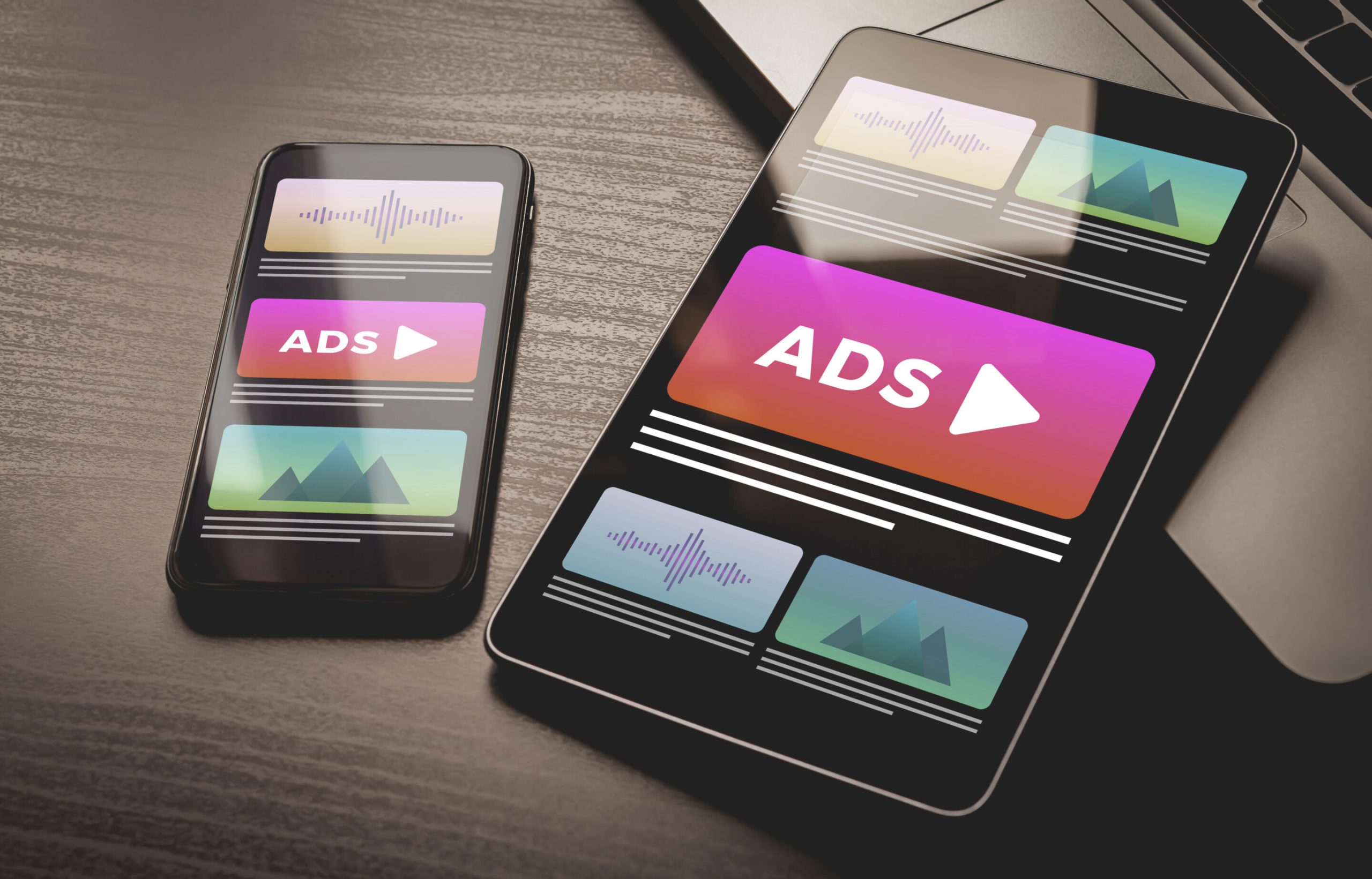
In-app advertising has been in the advertising world since the initial years. In the past days, advertisers used to directly communicate with publishers and developers of mobile apps to run their in-app branding campaigns. That is to say, the advertisers used to pay the app publishers directly to place ads in their apps. Thus, accessing the user base of mobile apps was a bit cumbersome.
Soon after, as the number of mobile applications and investors in digital advertising increased, these kinds of deals became obsolete. Moreover, programmatic buying and real-time bidding changed digital advertising to make it more efficient and automated.
Who is behind placing an ad on a mobile app?
There are usually two sides to successfully place an ad on a mobile application.
Advertisers have marketers either from their own teams and/ or an agency that creatively develops an in-app advertisement. They put together the required creatives for the ad. A demand-side platform (DSP) then picks up such ad campaigns from multiple advertisers. These campaigns are then assembled together to offer to the app publishers/ developers for publication.
The mobile app publishers and app owners incorporate the demands of advertisers’ sources either directly or with a supply-side platform (SSP) that assembles publisher supply. Usually, this incorporation takes place through SDK (a Software Development Kit) or at times through API (an Application Programming Interface).
An advertisement network bridges these two sides that bring together advertisers and their associates with app publishers and their associates. Therefore, through ad networks, multiple brands can reach out to their target demographics across several apps.
Who decides which app will appear when and to whom?
- Marketers decide who they want to target for outreach and with what kind of brand message.
- Marketers and their associates then lay out their advertising campaign goals, including their expenditure and their bar for ad campaign success.
- Following this, app publishers and developers sit to talk about ad revenue and how to fit ads into the apps’ user experience. That is, they evaluate how they can maximize their ad revenue without compromising on the user experience of the app.
- Once the developers figure out the evaluation, they finalize the ad campaign. The campaign then enters into a campaign management system of an ad network. An ad ops team checks for the network’s quality standards and protocols. After the team approves of the campaign following strict scrutiny, the ad server queues it up.
- At the user end, when a person opens an app, the network’s SDK or API gets triggered. It sends a message that that particular user might be ready to see an ad.
- On the basis of SDK’s available data, the ad network decides which ad would be relevant and offer the maximum revenue to the app developer. The ad network serves the right ads quite straightforwardly if the campaign goal is reach and brand impressions. However, if the campaign goal involves various performance metrics, then complex algorithms, artificial intelligence, and machine learning come into effect.
- Once the ad network selects the ad, the ad gets rendered and the user sees it. However, it may also happen that the user may leave the app environment or scroll past the ad opportunity by the time SDK or API presents a relevant ad.
- Finally, comes the payout and reporting period. At this step, advertisers determine how the in-app campaign fared and the payment based on the campaign’s performance.
Top 5 Social Media Network in India
| Social Media Name | Traffic (Active Users) | Category |
|---|---|---|
| 2.7 Billion | Social Media | |
| YouTube | 2 Billion | Video |
| 1.16 Billion | Social Media | |
| 766 Million | Professional | |
| 330 Million | Social Media |
FAQ’s for enhancing knowledge on mobile “In-App Advertising” –
Usually for the average banner ad format, a CPM of INR 60 – INR 100 is sufficient. Whereas average CPM for Interstitial ad format may start from INR 250. Also for Video ad formats CPM of INR 200 can be considered sufficient.
Interstitial digital advertising includes digital ads that are interactive and full-screen ads that may cover the partial/full interface of the host app or website. Usually, this kind of ad appears between content, so that they get placed at natural breaks or transition points like in between various activities/game levels in gaming apps.
Normally, Google charges 30% of the entire revenue made on a particular Android app and passes on the rest 70% to the mobile app developers.
In-app mobile ad rates may vary largely depending on different parameters including ad types, placement where the ad is run, existing revenue-sharing agreement in place, target audience, campaign goals, and revenue model, or sometimes just brand recall, etc. Various costing models include – CPM, which stands for Cost Per Mille, Cost per click (CPC) & CPA which stands for cost per action/cost per acquisition.
CPM / Cost Per Mille is the rate which the advertiser decides to pay per 1000 impressions of an ad campaign. Whereas, eCPM is the total earning of the publisher/1000 impressions. eCPM is a very useful parameter for publishers to optimize and evaluate their monetization model by monitoring advertisement revenue generated from the ad campaigns.
For mobile devices – 320*480 pixels (Most popular size) and 480*320 size interstitial ads perform quite well compared to other ad dimensions. However, for tablets – 1024*768 and 768*1024 size interstitial ads perform quite well.
